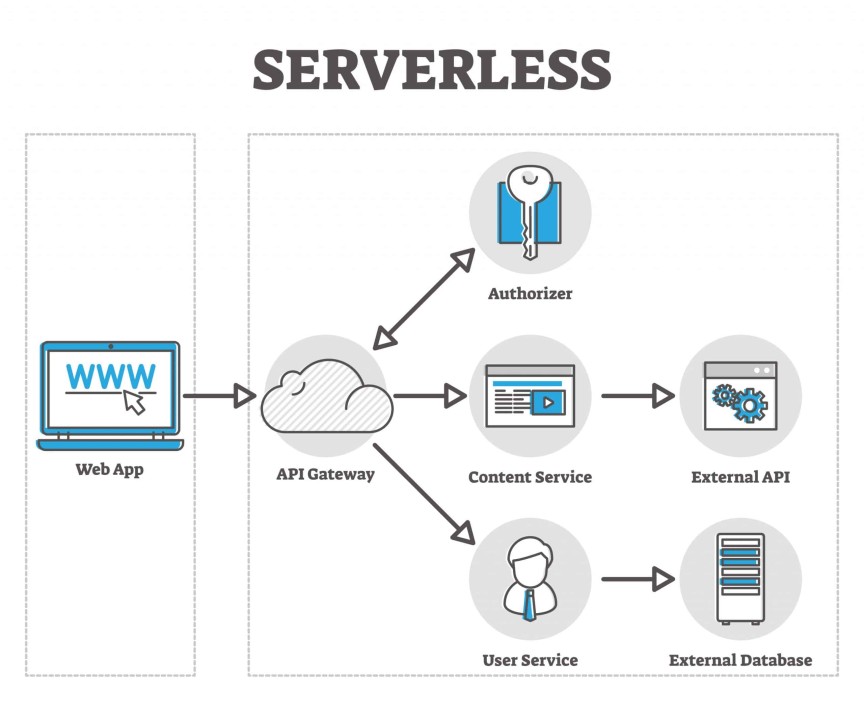In the fast-evolving landscape of cloud computing, businesses are continuously seeking ways to improve efficiency, scalability, and cost-effectiveness. One of the most revolutionary advancements in recent years is serverless architecture. Despite its name, serverless computing does not mean the absence of servers. Instead, it represents a model where cloud providers manage the infrastructure, allowing developers to focus solely on writing code. This approach offers several benefits, including reduced operational overhead, automatic scaling, and a pay-as-you-go pricing model.
What is Serverless Architecture?
Serverless architecture, also known as Function as a Service (FaaS), is a cloud computing model where the cloud provider dynamically manages the allocation of machine resources. This model allows developers to run code in response to events without provisioning or managing servers. Popular examples of serverless platforms include AWS Lambda, Azure Functions, and Google Cloud Functions.
How Does Serverless Architecture Work?
In a serverless setup, developers write functions that are triggered by specific events, such as HTTP requests, database updates, or file uploads. When an event occurs, the cloud provider executes the corresponding function. The underlying infrastructure automatically scales up to handle incoming requests and scales down when the demand decreases, making it highly efficient.

Benefits of Serverless Architecture
Cost Efficiency
One of the primary advantages of serverless computing is cost savings. With traditional servers, businesses often pay for idle time when their servers are not fully utilized. In contrast, serverless architecture operates on a pay-as-you-go model, where you are only charged for the actual computing resources used during function execution.
Scalability
Serverless platforms automatically scale based on the number of requests received. This auto-scaling feature ensures that your application can handle varying levels of traffic without manual intervention or pre-provisioning of resources.
Simplified Management
By eliminating the need to manage server infrastructure, serverless architecture allows developers to focus on writing code and developing features. The cloud provider takes care of server maintenance, updates, and scaling, reducing the operational burden.
Faster Time to Market
Since developers do not need to worry about server management, they can quickly build and deploy applications. This accelerated development process helps businesses bring their products to market faster, providing a competitive advantage.
Use Cases for Serverless Architecture
Real-Time File Processing
Serverless functions are ideal for tasks that require real-time processing, such as image or video processing. For example, when a user uploads a photo to a serverless application, a function can be triggered to resize or enhance the image automatically.

Data Transformation and ETL
Extract, Transform, Load (ETL) operations, common in data analytics, can benefit from serverless architecture. Functions can be triggered to process data as it arrives, transforming it for analysis and storing it in a database.
API Backend for Web and Mobile Apps
Serverless architecture is a popular choice for building APIs for web and mobile applications. It allows developers to create lightweight, scalable backend services that respond to HTTP requests.
Chatbots and Microservices
The event-driven nature of serverless computing makes it suitable for microservices and chatbots, which often require lightweight and responsive server-side logic.
Challenges of Serverless Architecture
a. Cold Starts
One of the significant challenges of serverless computing is the “cold start” issue, where functions experience a delay during their initial execution after being idle. This latency can affect the performance of applications that require quick response times.
b. Monitoring and Debugging
With serverless architecture, it can be challenging to monitor and debug functions due to the distributed nature of the architecture. Traditional monitoring tools may not provide the granularity needed to trace issues effectively.
c. Vendor Lock-In
Relying on a specific cloud provider’s serverless platform can lead to vendor lock-in, making it difficult to migrate applications to another provider without significant refactoring.
Conclusion
Serverless architecture is revolutionizing how applications are built and deployed, offering unmatched scalability, cost efficiency, and simplicity. While there are challenges to consider, such as cold starts and vendor lock-in, the benefits often outweigh the drawbacks for many use cases. As more businesses embrace cloud-native solutions, understanding and leveraging serverless architecture will become increasingly crucial for staying competitive in the digital era.
